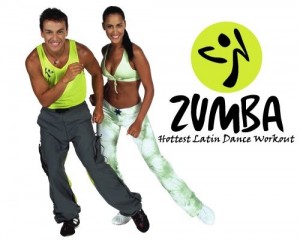
The 21st century version of a Richard Simmons’ ‘Sweating to the Oldies’ workout in neon clothes and pop music
Choose a trend…any trend. Choose Zumba, CrossFit, P90X, Insanity, Body Pump, or whatever else might surface in the next twelve to eighteen months. Exaggerative claims of the superiority of each fitness trend compared to the tried and true are made in just the same way Jazzercise, Tae Bo, and Buns of Steel were said to be the greatest fitness discovery since the last fitness discovery. Despite their varied take on exercise the one thing these trends have in common is that they are just trends. Many will die off and some will survive by taking on new form fifteen years from now, but none will ever enjoy as much popularity or acclaim as when they first surfaced. However, regardless of what trends come and go the fundamental principles of exercise never change.
The fundamental principles (intensity, volume, frequency, overload, specificity, individualism, and diminishing returns) are the judge and jury when it comes to deciding the fate of fitness trends. Violate one or several of these principles and its life in prison without parole or the death penalty. Although the average individual seeking to get in shape might not fully understand these seven principles or how they interrelate, they’re smart enough to recognize if what they are doing is yielding the result they want or not. If it is not working or has stopped working then some aspect of the program is in violation of the principles. It is at this time we see the rightful demise of the heralded fitness trend.
Here’s a brief overview of the 7 Principles of Exercise Science:
- Intensity – The possible percentage of momentary muscular and volitional effort exerted. The measure of how hard a person is working at any given moment during exercise.
- Volume – The amount of exercise performed in a workout. It refers to the number of repetitions, time under tension, and the number of sets performed.
- Frequency – How often exercise occurs; whether in general or for a specific muscle groups.
- Overload – The application of progressively greater demands through regular progression. This increase can come in the form of how much weight is lifted, reps performed, TUT, or frequency.
- S.A.I.D. (specific adaptation to imposed demands) – The nature of the exercise program will place specific demands on the body that leads to a specific result.
- Diminishing Returns – Exercise that exceeds the minimum necessary to produce a (potentially) optimum response is pointless as it relates to the best interests of the individual.
- Individualism – Exercise must be prescribed in accordance with the needs, goals, abilities, limitations, and preferences of the individual.
Each of these principles are present in every exercise program. The extent to which they are applied and balanced relative to the person’s goals and recovery ability will determine the program’s effectiveness. To the educated fitness professional or trainee who understands this it is easy to spot the flaws in fitness trends like those mentioned and predict when, how and why they will fail in the long-term. In upcoming blogs we’ll breakdown some of these trends individually to show the difference between trends and truth.

